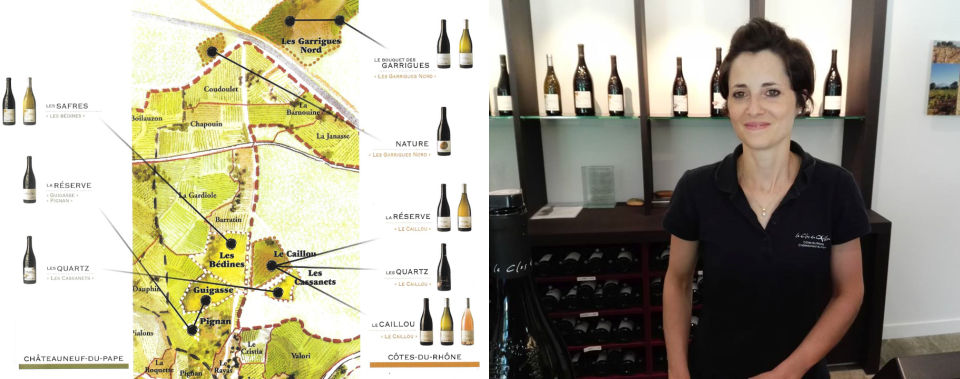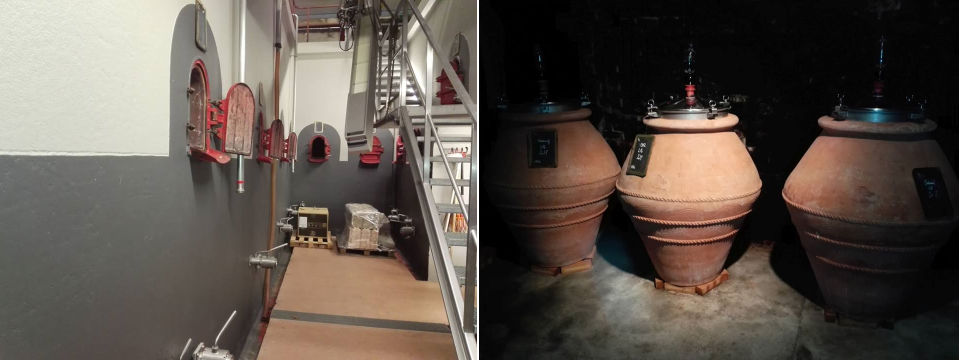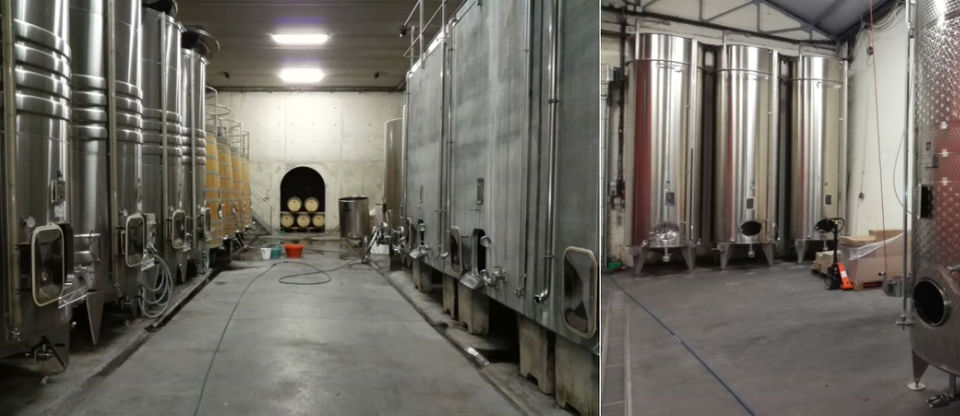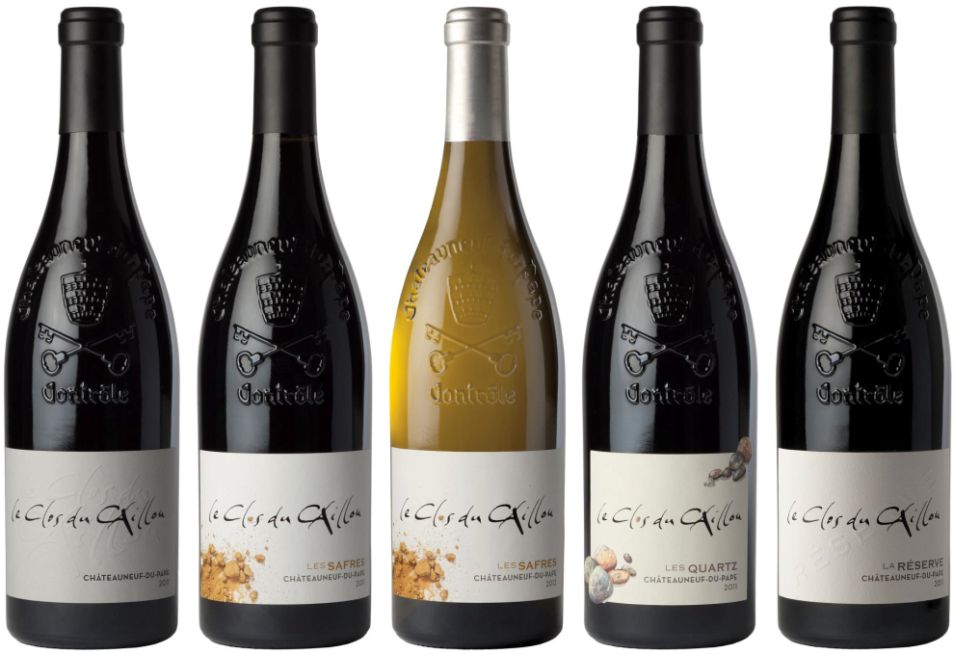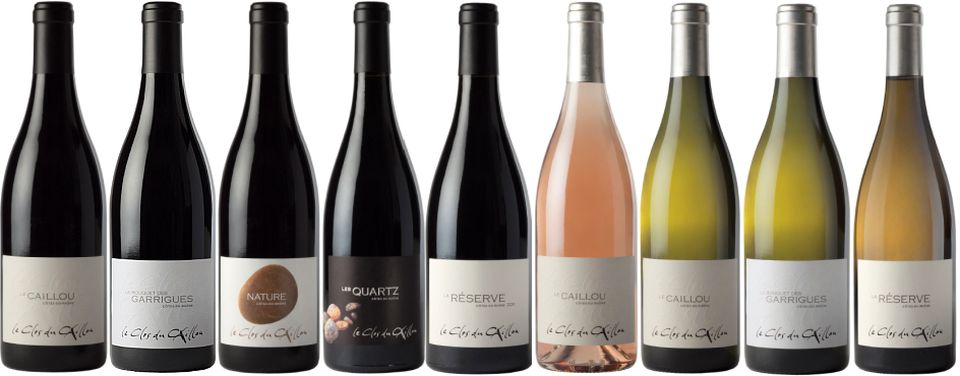|
Le Clos du Caillou
Company: E.A.R.L Pouizin - Vacheron
Sylvie Vacheron
Clos du Caillou, Chemin Saint-Dominique 84350 Courthezon
Tel. +33 490 707 305
Direct sale: Monday - Friday 9.00-12.00 and 13.30-17.30. Saturday 9.00-12.00.
Mail: closducaillou@wanadoo.fr
Web: http://www.closducaillou.com




In
1895 the famous engineer Elie Dussaud (1821-1899) bought Le Clos. At that time
the place was covered by wood. The
purpose of the acquisition was to use the area as a hunting lodge. Before
his death four years after the purchase Dussaud built a small cellar for wine
making. He
also built the mansion which later on was rebuilt and extended today and serves as the
residence of the Vacheron family.
Elie
Dussaud also built Clos Val Seille, the beautiful castle which serves as the
mayor's office today, and if extensions today serve as cellars of Domaine Clos
Val Seilles. He also owned Chateau de Beaucastel in 1865 when phylloxera paralyzed the wine
production all over France.
When
it was time to determine the limits of the new appellation of Chateauneuf du
Pape the owner did not want to hear of such things. As
the geological experts arrived at the scene to investigate soil conditions, they
were met by a shotgun with a strong call to keep away from the domain and
therefore only 9 ha of the domain's vineyards today became a part of the appellation. If the owner
had been more intested in wine the vineyards inside the 3 km long stonewall (Le
Clos) would have been included in the appellation. The best Cotes du Rhones are
made from here.
The
start of the domain's path from a wooded hunting idyll to a domain recognized as
one of the best domains in the appellation, began when the current owner's
father Claude Pouizin acquired the property in 1955. He started clearing the
forest away and to plant
vines instead. Most
of the domain's vineyards are planted between 1955 and 1978. Winemaking and
storage took place in the ancient cellars of the late 1890s. Sales
of wines happened in the tank to negociants, but eventually became a larger part
bottled and sold from the domain. In 1980 the first export order were shipped. In 1993 the
last delivery to a
negociant took place. The sale of wines was devellopped by Claude's wife
Colette.
In
1995 - after 40 years of hard work to build a
domain - Claude Pouizin wanted
to retire. It
was only Sylvie, the youngest of his three daughters, who were interested in
taking over the
domain. She
was married the son of a wine grower in Sancerre, Jean-Denis Vacheron.
In 1996 the couple moved with their two children, the 2-year-old daughter
Marilou and the newborn son Axel to Clos du Caillou and took over the domain.
The change of
generation meant that the
property's wines got a
huge quality boost.
The wine writers especially in
America praised Vacheron's
effort, and exports to
America increased tremendously.
In March 2002 died Jean-Denis
Vacheron tragically in
a car accident and Sylvie
was left alone to take
charge.
The oenologist Philippe Cambie
began already in 2001 as an advisor of Jean-Denis Vacheron.
Another lucky alliance
was the hiring of the winemaker
at Chateau du Trignon Bruno
Gaspard, who has
been responsible for winemaking since
2002.
Wines accodring to website
January 2021
(The wines from 2018 contains around 15% les Grenache than in normal
years)
Chateauneuf du Pape Tradition
2018: 70% Grenache, 15% Mourvedre,15% Syrah.
Aged in foudres or demi-muids for
14 months.
Chateauneuf du Pape Les Safres
2018: 75% Grenache, 25% Mourvedre, Vaccarese and Cinsault.
Grencache aged in foudres Mouvedre in demi-muds for 14
months
Chateauneuf du Pape Blanc Les Safres
2019: 40% Roussanne, 30% Grenache Blanc and 30% Clairette from the lieux-dits Les
Bédines and Pignan.
Fermented and then aged in barrels for 4 month
Chateauneuf du Pape Les Quartz
2018: 85% Grenache, 30% Syrah.
Grenache aged in (90%) i demi-muids, 10% i amphora.
Syrah in barrels for 14 months.
Chateauneuf du Pape La Réserve
2018: 50% Grenache, 50% Mourvedre.
Aged for 14 months in demi-muids (88%)
or amphoras.
Chateauneuf du Pape Les Quartz
2018: 85% Grenache, 30% Syrah.
Grenache aged in (90%) i demi-muids, 10% i amphora.
Syrah in barrels for 14 months.
Chateauneuf du Pape La Réserve
2018: 50% Grenache, 50% Mourvedre.
Aged for 14 months in demi-muids (88%)
or amphoras.
Cotes du Rhone Le Caillou
2019: 80% Grenache, 10% Syrah, Mourvedre, Cinsault.. 60+-years-old
vines. 80% de-stemmed.
Cotes du Rhone Le Caillou Rosé
2019: 70% Grenache,30% Cinsaul, Mouvedre, Syrah. Direct press.
Cotes du Rhone Le Caillou Blanc
2019: 50% Viognier, 20% Clairette, 15% Roussanne, 15% Grenache Blanc
Cotes du Rhone Le Bouquet des Garrigues
2018: 70% Grenache, 15% Syrah, 15% Carignan, Mourvedre, Counoise.
Aged in
demi-muids or foudres for 14 months.
Cotes du Rhone Rosé Le Bouquet des Garrigues
2018: 55% Mourvedre, 30% Grenache, 15% Syrah
Cotes du Rhone Blanc Le Bouquet des Garrigues
2019: 40% Clairette 30% Grenache Blanc, 15% Viognier,15% Roussanne.
Cotes du Rhone Esprit Nature
2019: 80% Grenache, 20% Syrah.
Cotes du Rhone Les Quartz
2018: 80% Grenache,20% Syrah. 60-years-old growing in the same type of soil as Chateauneuf du Pape Les Quartz. Aged in wooden tank, foudres or demi-muids
for 14 months.
Cotes du Rhone La Réserve
2018: 75% Grenache, 25% Mourvedre.
Aged in demi-muids or amphoras (10%) for 14 months.
Cotes du Rhone Blanc La Réserve
2019: 100% Clairette
Vinification in new demi-muids (55%) or in steel tank. Matured here for 5
months.
An apartement is for rent at the
domain
|
